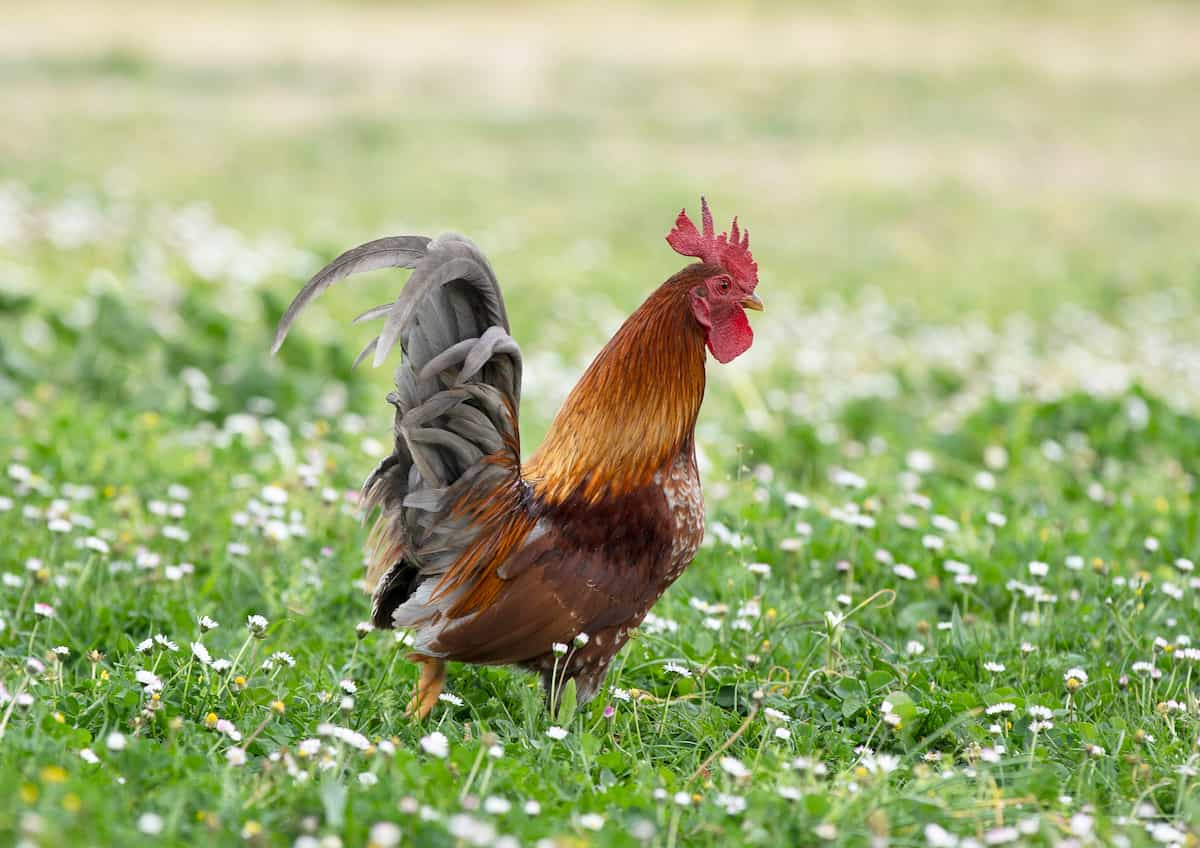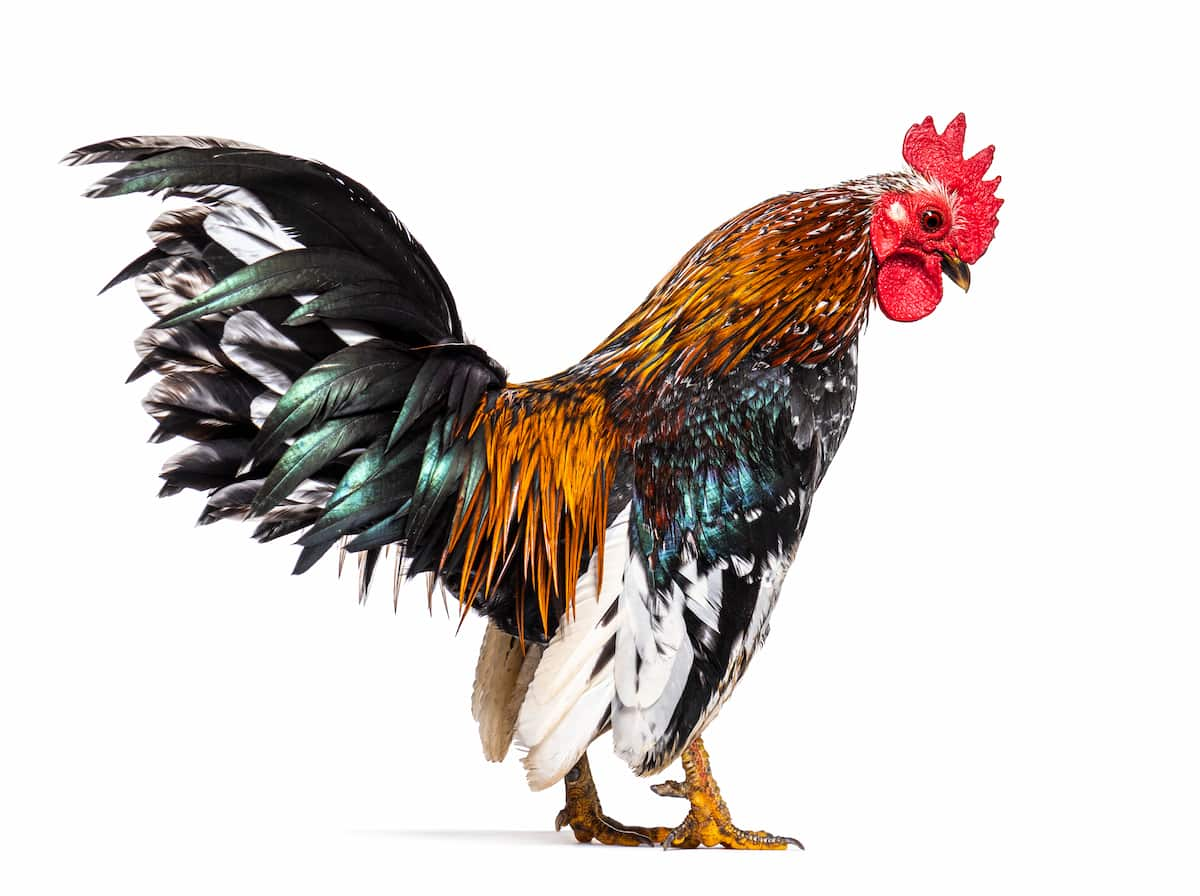Seramas are quickly gaining popularity as pets for their ornamental beauty and friendly personalities. The Serama chicken breed originated in Malaysia within the last 50 years. Today, many types of Seramas are bred for various qualities, including size, feather coloration, and overall appearance. Despite their relatively short history as recognized, they have become one of the most popular ornamental chicken breeds worldwide.

Ultimate Guide to Serama Chicken Breed
What Are Serama Chickens Used For?
- Their attractive appearance makes them a popular breed among chicken enthusiasts who want to showcase these beautiful birds at poultry shows or exhibits. Serama chickens come in different colors, including black, white, brown, and gold, making them an appealing addition to any flock.
- In addition to being ornamental birds, Seramas are also raised for eggs. Despite their tiny size, they lay about four eggs per week on average. However, because of the bird’s size, the eggs are also quite small compared to other breeds. Serama chickens are wonderful pets and fascinating additions to any backyard flock due to their unique appearance and charming personalities.
Characteristics of the Serama Chicken
- The Serama chicken is a unique breed that stands out due to its distinct physical appearance. They are small, only standing 6-10 inches tall, with an upright posture that makes them look taller. Their short back and proximity between their neck and tail feathers make them stand out from other breeds.
- In addition to its physical appearance, the Serama chicken has various characteristics that set it apart from other breeds. They are known to be active birds that enjoy running around and exploring their surroundings.
- Serama chickens also have a high energy level, requiring plenty of exercise space. Even though they are small, they still need room to move around freely.
- Another interesting characteristic of the Serama chicken is how well-suited they are for indoor living. Due to their small size, many people keep them as pets inside their homes.
Housing for Serama Chickens
- The coop must be large enough to accommodate all of your birds comfortably. Each bird requires at least 1 square foot of floor space inside the coop.
- Make sure that the coop is well-ventilated but not drafty. Adequate ventilation will help prevent moisture build-up and ammonia build-up from chicken droppings which can cause respiratory issues in chickens.
- Additionally, ensure your coop has plenty of roosting poles for your birds to perch on. Seramas love perching high up off the ground, so provide them with ample room to do so.
- Providing proper housing conditions for your Serama chickens will ensure their comfort and well-being while maximizing their potential as productive layers or ornamental pets.
In case you missed it: Ultimate Guide to Frizzle Chicken Breed: Characteristics, Feed, and Care

Serama Chicken Weight
Class Micro is the smallest of all and includes males that weigh up to 13 ounces and females that weigh up to 8 ounces. Class A has slightly heavier birds, with males weighing under 13 ounces and females weighing under 12 ounces.
Class B includes Seramas that are even larger than those in class A. Males can weigh up to 16 ounces, while females can reach up to 15 oz. Class C contains the heaviest Serama chickens, with males and females weighing about 19 ounces.
| Class | Males | Females |
| Micro | up to 13oz | up to 8oz |
| A | under 13oz | under 12oz |
| B | under 16oz | under 15oz |
| C | under 19oz | under 19oz |
Serama Egg Production
Serama chickens may be small but are very productive when laying eggs. Despite their tiny stature, these birds lay about four eggs a week. You can expect your Serama hens to produce between 180 and 200 eggs annually.
Feeding Tips for Serama Chickens
- It’s important to provide Serama chickens with a balanced diet that meets their nutritional needs. These tiny birds have fast metabolisms and require high-quality food to maintain their health.
- Ensure that your Serama chickens can always access fresh water. Dehydration can be fatal for these small birds, so make sure they always have clean water available.
- In terms of feed, many commercial options are available on the market, specifically formulated for bantam breeds like Seramas.
- You can supplement your Serama’s diet with fresh fruits and vegetables. Be careful not to overfeed them, as excess weight can lead to health problems in these tiny birds.
- Avoid giving your Serama chickens foods high in salt or sugar, as they can cause digestive issues. By providing a balanced diet rich in nutrients and keeping their water supply fresh and plentiful, you’ll help ensure that your Serama flock stays happy and healthy.
Health Care for a Serama Chicken
- It is vital to ensure that they live a long and healthy life. The most important aspect of health care is keeping their coop clean and well-ventilated. This means regularly cleaning out bedding, removing any droppings, and making sure there is good airflow.
- Another crucial aspect of Serama health care involves providing them with proper nutrition. A balanced diet should consist of high-quality feed formulated for bantam breeds like Seramas, supplemented with fresh fruits and vegetables.
- Seramas are susceptible to common poultry diseases such as avian influenza, Marek’s disease, and respiratory infections. It’s necessary to keep an eye on your birds’ behavior and seek veterinary attention if you notice anything unusual or concerning.
- Parasites can be problematic in small flocks kept indoors or outdoors. Regularly check your birds for lice or mites by conducting routine inspections under their wings or around the vent area where these pests often congregate.
- Proper nutrition is key to keeping Serama chickens healthy. A balanced diet should include a combination of commercial feed, fresh greens, insects, and grit for digestion.
- Seramas also benefit from regular exercise like any other chicken breed. Providing them space to roam outside or even setting up indoor obstacle courses can keep them active and happy.
- Maintaining good hygiene and providing quality food while monitoring potential health issues will help ensure your beloved Serama flock stays healthy.
In case you missed it: Ultimate Guide to Cochin Chicken Breed: Characteristics, Feed, and Care

Conclusion
Serama chickens are mainly used for ornamental purposes. Due to their small size and unique characteristics, they make great indoor or outdoor pets. You can keep them in your backyard garden or even inside your house. The Serama chicken’s unique combination of physical traits and personality makes it a fascinating breed worth considering if you want something special to add to your flock or home.
- Feed Your Flock for Less: Top 10 Tips to Save on Chicken Feed
- Ultimate Guide to Ossabaw Island Hog: Breeding, Raising, Diet, and Care
- Hatching Answers: The Top 10 Reasons Your Chickens Aren’t Laying Eggs
- Eggs and Economics: Breaking Down the Cost of Raising Backyard Chickens
- Defend Your Greens: Proven Methods to Keep Iguanas Out of Your Garden
- Ultimate Guide to Cinnamon Queen Chicken: A Comprehensive Guide for Beginners
- Ultimate Guide to California Tan Chicken: Breeding, Raising, Diet, Egg-Production and Care
- Ultimate Guide to Marsh Daisy Chicken: Breeding, Raising, Diet, and Care
- 10 Types of Chicken Farming Businesses You Can Start for Profits